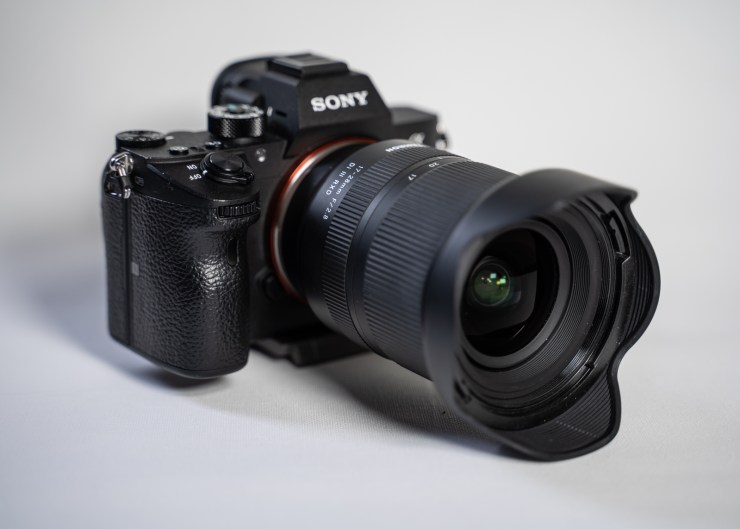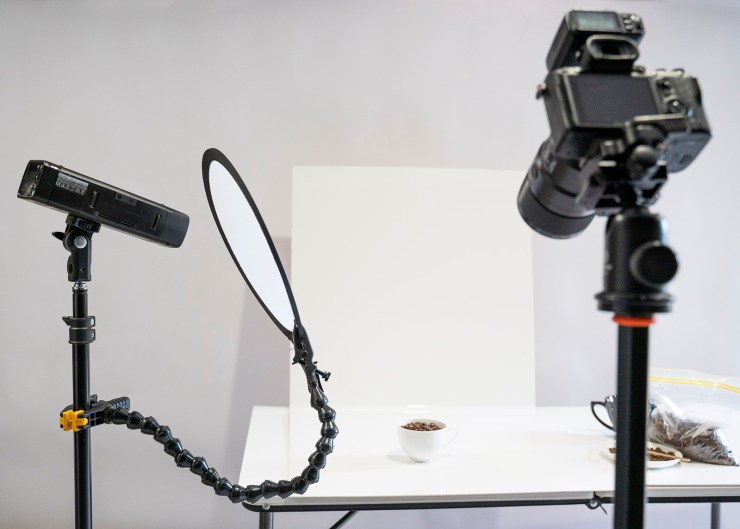Product photography can be one of the most gear hungry genres out there. Cameras, and lights and modifiers and stands and backdrop rigs and more and more and more … you get the idea. But what do you really need to get started in product photography?
Consider WHAT you are planning to shoot. If it’s clothes or cars or larger items, obviously you will need a larger space and quite probably a lot of gear. But perhaps start out smaller. Jewelry, or food or cosmetics and hair products. What about sports drinks or alcohol?
You also need to consider if this is for a billboard or online and social media. Billboards really need a much higher pixel count than social media does. This can affect the camera choice. Again, let’s start out simple and go for shots worthy of a social media marketing campaign. You will also need to consider a budget and storage.
Core basics: Camera and lenses
So that brings us to the core basics. You’ll obviously need a camera and a tripod. The camera should be anything that roughly shoots 20 megapixels or higher, like a Nikon D750 or Sony a7 III (even second hand these are affordable good range full-frame cameras).
You will need a lens. I personally love my Tamron 28-75mm f/2.8 workhorse, but the Tamron 90mm macro (for Nikon) or the Sony 90mm macro are also excellent choices for product photography. A good sturdy tripod is also a real necessity for product photography. If you chose one when an extendible articulated arm, that can be an added bonus.

Basic setup
A table
Looking at smaller items as product subjects, you’ll be needing a basic setup. A table, something as simple as a kitchen table, can be a great start. But something with adjustable height is fabulous and it need not be expensive. You’ll want something that you can clamp background and backdrop stands to.
Backgrounds
Then there are the backgrounds. Keep it simple here too. Seamless paper backdrops are a fabulous place to start. You can buy larger backgrounds for food and product photography, which are usually wrinkle-free vinyl with high-resolution images printed on them. They are often water-resistant too. Another option is fabric; cotton or muslin are great options too. Project paper or Tyvek is great, and acrylic sheets work well, and are available in a variety of colors and sizes.
Then you’ll need something to hold your background, so many options for a backdrop stand, don’t forget some clamps to hold everything in place. It really is all dependent on your subject and the type of product photography you are aiming for. Additional props and visual aids to tell the story of the product concept can be a help, but not essential. There are commercially made table and backdrop stand that you can clip your backdrop to, but these are more expensive. Not really ideal when you start in product photography.

Lighting
Lighting can really boil down to the overall budget. At one end of the spectrum are speedlights, but they can be limited in features and power. A hybrid like the Godox AD200Pro is a little more expensive but very versatile.
If you are working your way through to a more professional setup, you’ll want a couple of strobes (like the Godox AD400Pro), some softboxes or grid lights. There is nothing wrong with a standard 5-in-1 reflector. Then there are also light tents or lightboxes which are cost-effective and can double as a light modifier.

Gear can present more creative options … but it’s not necessary
To be perfectly honest, you can create product photography on small subjects with very little. The more gear you get, the more creative you can get with your setup.
You can move from one light to two or three lights. Light modifiers can make crafting your light a bit easier. Whiz-bang fancy backdrops can work wonders, but you can beat a standard black or clean white background for online images either.

At the end of the day, what do you really need to get started in product photography? A few key items, like camera and lens and such. The biggest thing you need on set is your imagination and creativity. With a little imagination, and some Maguiver style ingenuity, you can create just about anything.
Tell your story with the second annual Visual Storytelling Conference!
Experience four days of interactive, online training sessions featuring a range of educational content with experienced photographers and content creators. This free event kicks off with a series of technical boot camps to build essential skills, followed by live, online sessions on photography, video, business and social media. Join live from March 10-13, 2022!
